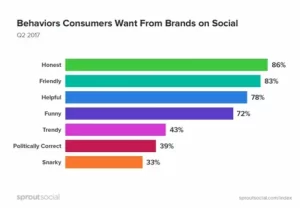In todays competitive market landscape, where product and services are abundant and readily available, creating a strong brand presence is imperative for businesses to stand out. One concept that plays a pivotal role in this endeavor is Customer-Based Brand Equality.
Understanding Brand Equality:
Brand equity refer to the value that a brand holds beyond its tangible assets. It encompasses the perception and associations that customer have with a particular brand, influencing their decisions and behavior.

“Empowering diversity, embracing equality. 🌟
Importance of Brand Equity:
Building brand equity is crucial as it foster customer loyalty, enables premium pricing, and acts as a barrier to entry for competitors.
Components of Customer-Based Brand Equity:
CBBE comprises several key components that collectively contribute to the overall strength of brand.
Brand Awareness:
Brand awareness denotes the extend to which consumers recognize and recall a brand. It can be measured through metrics such as aided and unaided recall, brand recognition, and top-of-mind awareness.
Brand Loyalty:
Brand loyalty reflect the degree of attachment and commitment that consumer have towards a brand. It involves repeat purchases, advocacy, and resistance to switching to competitors.
Perceived Quality:
Perceived quality refer to consumer subjective assessment of a brand superiority and excellence compared to alternative. It compasses factors like product performance, reliability, and durability.
Brand Associations:
Brand association are the mental connection and attributes linked to a brand in consumers minds. These association can be functional, emotional, or symbolic.

Establishing and nurturing CBBE requires a strategies approach aimed at enhancing each of its components.
Establishing Brand Awareness:
Creating brand awareness involves deploying marketing strategies to increase brand visibility and recognition among target audiences. This include advertising campaign, social media presence, and sponsorship.
Creating Brand Loyalty Programs:
Implementing loyalty programs incentivize repeat purchases and foster long-term relationships with customers. These programs may include rewards points, exclusive offers, and VIP perks.
Ensuring Perceived Quality:
Maintaining high standers of product quality and customer service is essential for reinforcing positive perceptions of the brand’s excellence and reliability.
Measuring Customer-Based Brand Equity:
Assessing the strength of CBBE involves various quantitative and qualitative method.
Surveys and Questionnaires:
Conducting consumer surveys and questionnaires helps gauge brand awareness, loyalty, and perception providing valuable insights for strategic decision-making.
Market Research:
Analyzing market trends, competitor positioning, and consumer behavior enables brands to identify areas fir improvement and opportunities for differentiation.

“Unveiling insights, shaping strategies. 📊🔍
Brand Valuation Methods:
Utilizing financial models and valuation techniques allows brands to quantify the monetary value of their brand assets, including intangible assets like brand equity.
Example of Successful Costumer-Based Brand Equity:
Several brands have achieved remarkable success in building and leveraging CBBE to gain competitive advantage.
Apple Inc:
Apple’s strong brand equity is evident through its loyal customer base, premium pricing strategy, and iconic brand image synonymous with innovation and creativity.
Nike Inc:
Nike’s brand equity is characterized by its association with athletic performance, empowerment, and cutting-edge design, resonating with consumers worldwide.
Coca-Cola Company:
Coc-Cola’s enduring brand equity stems from its rich heritage, universal appeal, and emotional connections fostered through decades of marketing campaigns.
Challenges in Building and Maintaining Brand Equity:
Despite its benefits, building and sustaining brand equity pose several challenges for businesses.
Competitive Landscape:
In a crowded marketplace, standing out amidst fierce competition requires continuous innovation and differentiation to maintain relevance and preference.
Consumer Preferences and Trends:
Changing consumer preferences and evolving market trends necessitate brands to adapt and evolve their strategies to remain appealing and resonant with their target audience.

“Navigating the currents of consumer preferences and trends. 🌊💡
Crisis Managment:
Managing crises and mitigating negative publicity is crucial for protecting brand reputation and preserving customer trust during challenging times.
Conclusion:
Customer-Based Brand Equity is a cornerstone of brand management, encompasses the perceptions, association, and loyalty that consumer attribute to a brand. By strategies cultivating each component of CBBE and adapting to market dynamic, businesses can strengthen their brand equity and foster long-term success.
FAQs:
What is the difference between brand equity and customer-based brand equity?
Brand equity encompasses the overall value of a brand, include its financial and strategic implications, while customer-based brand equity focuses specifically on the perception and loyalty of consumer towards the brand.
How can small businesses build customer-based brand equity?
Small businesses can build CBBE by delivering consistent brand experience, engaging with their target audience on social media, offering personalized customer service, and leveraging word-of-mouth marketing.
Why is brand loyalty importance for customer-based brand equity?
Brand loyalty fosters repeat purchase, positive word-of-mouth referrals, and resistance to competitive offering, thereby contributing to the long-term sustainability and growth of a brand.
What role does emotional branding play in building customer-based brand equity?
Emotional branding evokes feelings and sentiments that resonate with consumers on a personal level, fostering strong emotional connections and loyalty towards the brand, which is integral to building CBBE.
How can companies measure the effectiveness of their customers-based brand equity strategies?
Companies can measure CBBE through various metrics such as brand awareness surveys, customer satisfaction rating, brand valuation models, and social media analytics.

